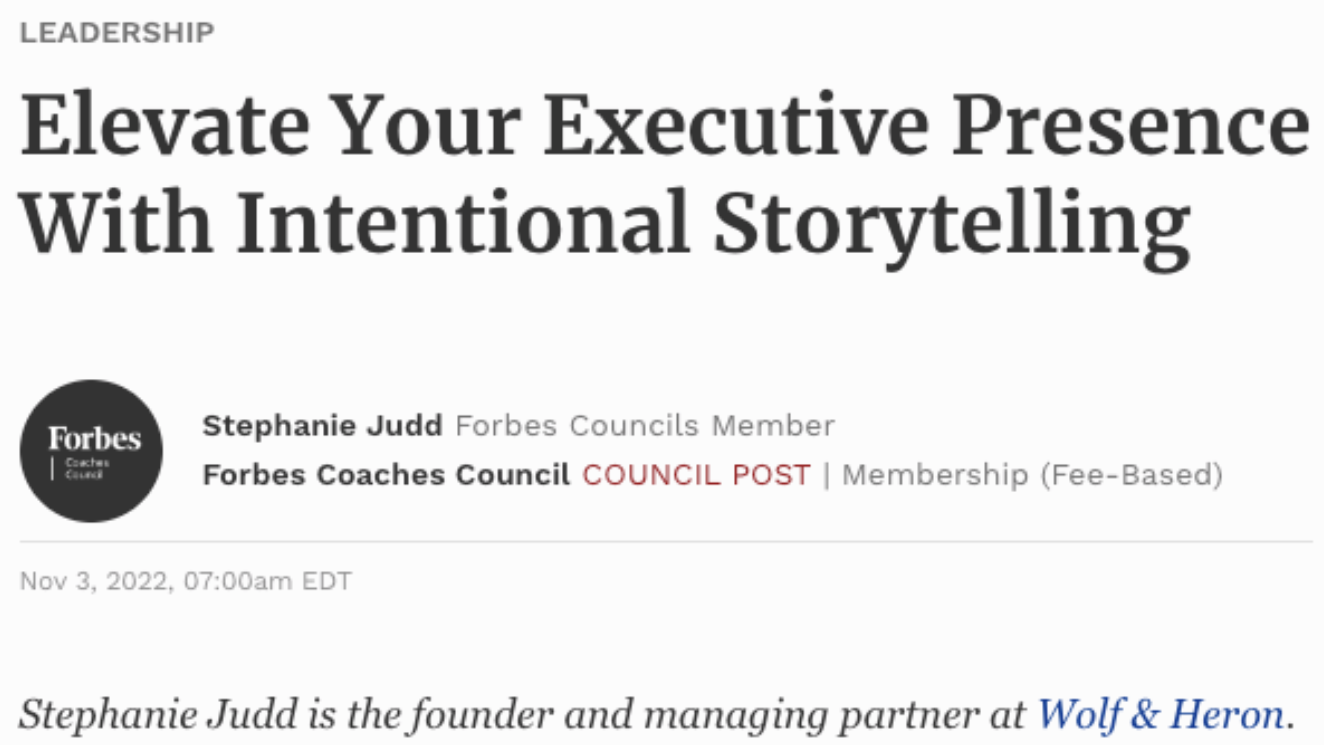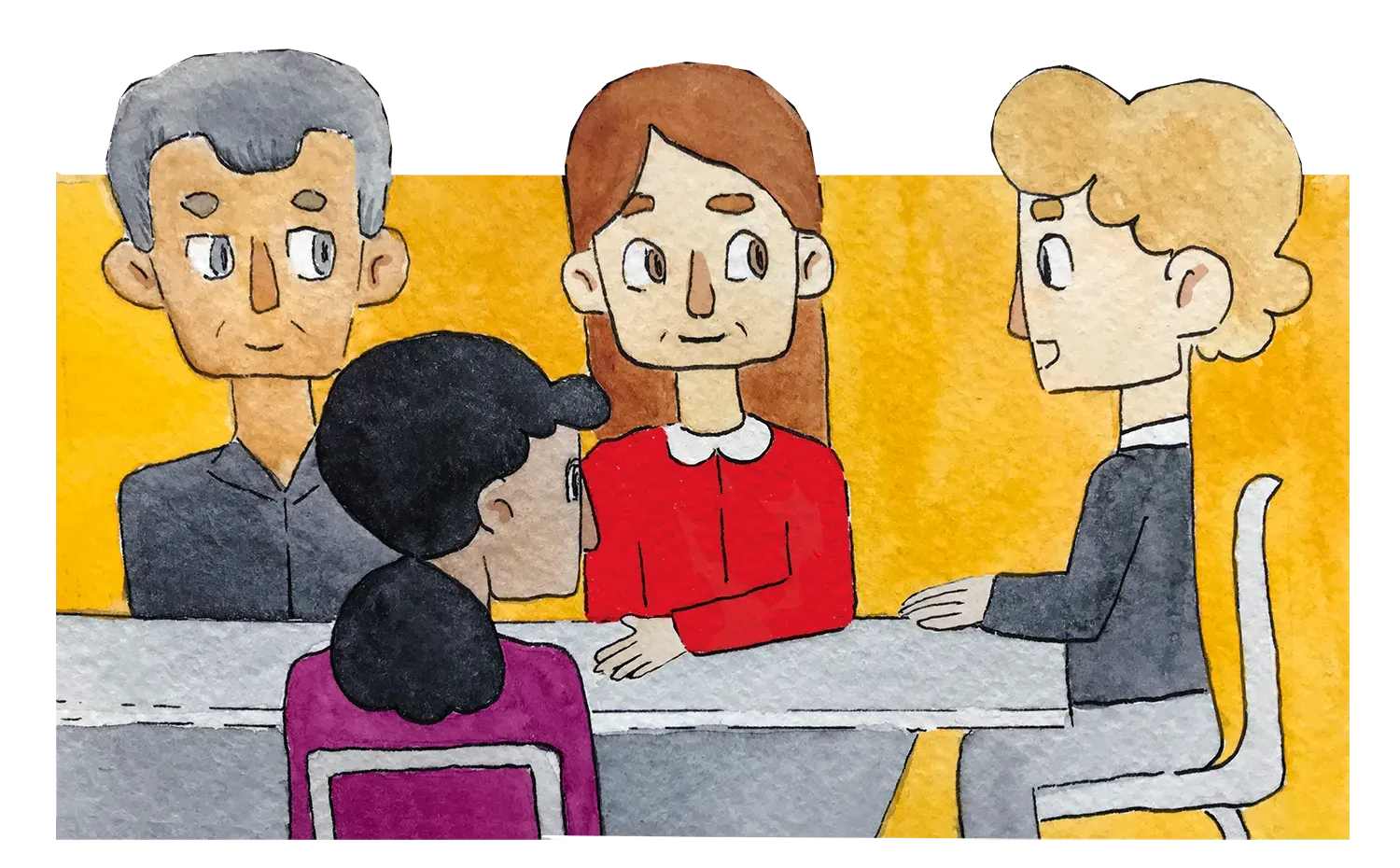Elevate Your Executive Presence With Intentional Storytelling

This article was first published on Forbes on 03 November 2022.
When I recently googled the term “executive presence,” I was offered more than 351 billion results in English alone. To put it mildly, the world is obsessed with executive presence. Although hard to define in concrete terms, most of us can spot it in someone who has it; they’re perceived as “leadership material.” Most of us have also had a moment where a boss has encouraged us to work on our presence. We may recognize it intuitively, but it’s not always easy to know how to develop it.
According to a study by the Center for Talent Innovation, executive presence accounts for 26% of the struggle to advance within an organization. The good news is that despite its enigmatic nature, executive presence is a learnable skill.
In her book Executive Presence, Sylvia Ann Hewlett describes executive presence as resting on three pillars: gravitas, communication and appearance. As a storytelling and presentation skills coach, I work with clients on all three of these pillars. Here’s my tip: If you’re aiming to develop your executive presence, consider developing your storytelling skills as one way to do so. Here are a few reasons why becoming an intentional storyteller can help build your executive presence.
Storytelling, in and of itself, makes you appear to be 'leadership material.'
Steve Jobs once said, “The most powerful person in the world is the storyteller.” Stories invite us in, activate our curiosity, make us feel things and cause us to think differently. It’s no surprise that we respond to storytellers as if they hold the world in their hands; storytellers inspire and captivate us.
If executive presence is what you’re aiming for, telling well-crafted stories often will go a long way to making you appear to be “leadership material.”
Stories help you show up authentically.
One of the core qualities of an influential story is that it reveals an authentic truth about the storyteller. Even when the storyteller tells a story in which they are not a key character, I encourage the storyteller to reveal what about the story resonates with them. The main purpose for ensuring some amount of vulnerability on the part of the storyteller is that it helps to build trust and connection between the storyteller and the audience.
According to Hewlett, “Everyone [she and her colleagues] surveyed or spoke to affirmed the importance of authenticity, pointing out that no leader can win or retain followers without it.”
Develop a library of intentionally crafted stories to give you an arsenal of ways to share details of yourself in an authentic and compelling way.
Telling stories makes it easier to get rid of the props.
Hewlett writes that “referring to lists, reading your notes, using eighty-seven PowerPoint slides, shuffling papers or flip charts, and putting on your glasses... are all actions that detract from your gravitas because they focus attention on your lack of confidence. If you cannot command your subject, you certainly won’t be able to command the room. Know your material cold so that you needn’t rely on notes.”
Because our brains are wired for stories, many of us are fundamentally better at remembering stories than any other kind of information. This can be used to your advantage as you aim to command your subject and know your material cold. If you have stories that you can tell that connect the dots or illustrate a point metaphorically, you’ll have things to say that you can remember easily, and you won’t need your props to help you.
Stories offer focused opportunities to bring a layer of intentionality to your delivery.
I find my clients are most concerned with figuring out what they want to say and sequencing the information appropriately. They often let perfecting their message take most of their preparation time and effort. Yes, it is an important piece of compelling and impactful communication, but research shows that what you say is much less important than how you say it.
That being said, I find my clients are much more willing to examine exactly how they say things and bring a level of intentionality to their preparation for the bits of their presentation that are specifically intended to be stories. Perhaps it’s the dramatic quality of a story or the fact that there are examples of great performers using thoughtful delivery strategies that gives us permission to be more expressive in these moments. Perhaps it’s the fact that we know stories will be remembered, so we want to spend time refining them to perfection. Whatever the reason, I see storytelling as a gateway to exploring intentional delivery on a more holistic level. If you can master several two-minute stories, delivering them with powerful pauses, meaningful gestures and a grounded stance, then maybe one day you can do the same when you’re not exactly in “storytelling mode,” per se. Consider your stories your proving ground for more effective delivery across all your communication, and see what strategies you can internalize to the point that they’re subconscious.
Storytelling is just one way to build your executive presence, but it’s a powerful way. By honing your craft as a storyteller, you will also be shaping external perceptions of yourself as “leadership material.”
Recent Posts





